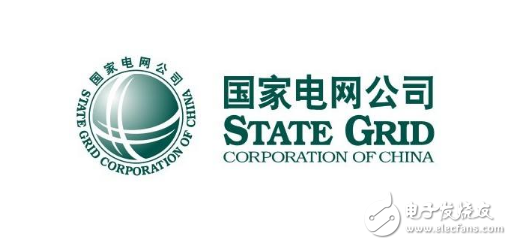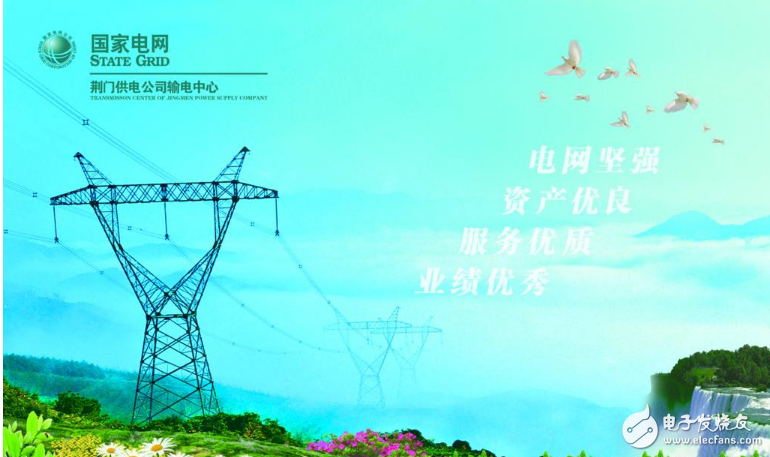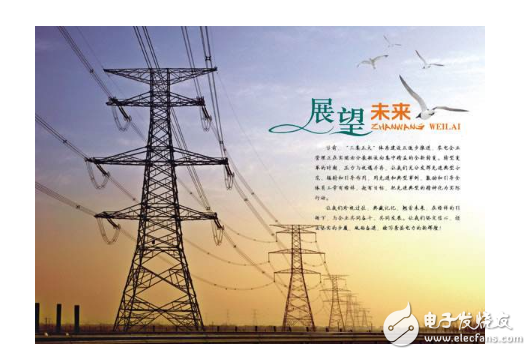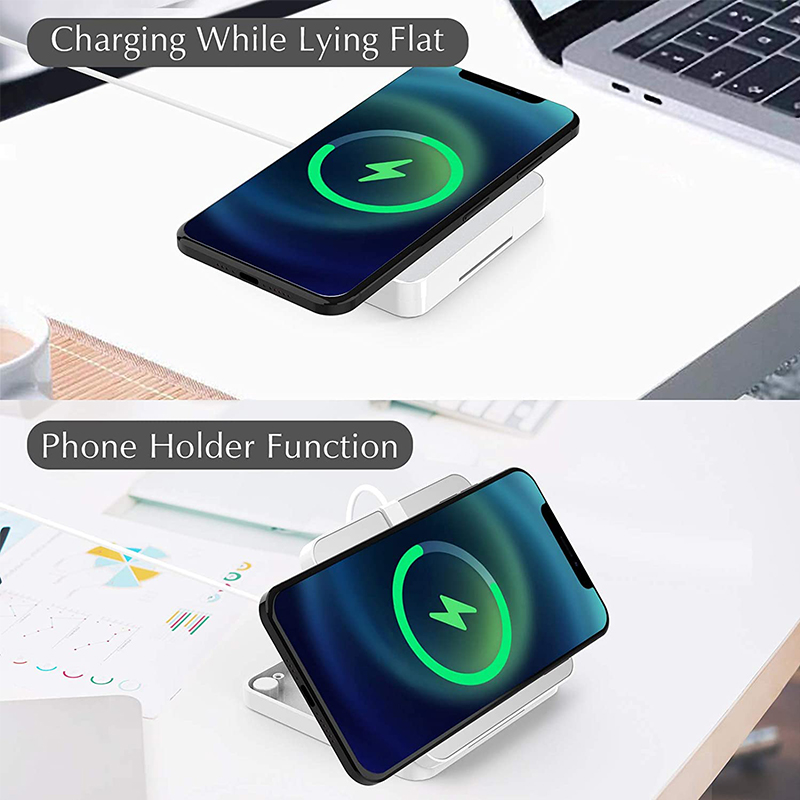With the accelerating pace of China's power development, China's power grid has also developed rapidly. The operating voltage level of the grid system continues to increase, and the network scale continues to expand. The country has formed six large-scale regional power grids of Northeast China Power Grid, North China Power Grid, Central China Power Grid, East China Power Grid, Northwest Power Grid and China Southern Power Grid, and has basically formed a complete long-distance transmission grid.
China Industrial Research Network released the 2015-2022 China grid industry development status survey and development trend analysis report that in recent years, China's power grid infrastructure investment scale has continued to expand, accounting for a steady increase in the proportion, a number of domestic and international power grid projects have started Built, operated. In 2012, the national power grid project completed an investment of 369.3 billion yuan, an increase of 0.2% over the previous year. Facing the rapid development of new energy sources such as wind power and photovoltaics, China's modern power grid architecture, characterized by large-scale utilization of renewable energy and intelligence, has begun to emerge.

In 2013, the national power grid project completed an investment of 389.4 billion yuan, a year-on-year increase of 5.44%. The year-on-year growth rate of grid investment (accumulated monthly) is generally characterized by “high before and lowâ€. As of the end of 2014, the length of the transmission line of the national power grid of 220 kV and above and the capacity of the public substation equipment were 572,200 km and 3.027 billion kVA, respectively, up 5.2% and 8.8% respectively.
In March 2015, the “Several Opinions on Further Deepening the Reform of the Power System†was introduced, introducing competition in the open market on the power generation side and the power selling side, and the price was formed by the market. At the same time, the middle of the transmission and distribution network, the monopoly of the power grid company Will be broken. At present, power grid construction has become the main direction of China's power construction, and the prospect of power grid construction is attractive. During the “Thirteenth Five-Year Plan†period, China's power grid investment scale will continue to expand. By 2020, a unified and strong smart grid will be built, and the goal of building a world-class power grid will be achieved.
China's power grid investment has always been in a monopoly state. The China Southern Power Grid is responsible for investing in, constructing and operating the power grids of the five southern provinces of Guangdong, Guangxi, Yunnan, Guizhou and Hainan. The State Grid Corporation is responsible for investing, constructing and operating the grids of 26 provinces and cities nationwide. At the same time, local power supply companies such as Inner Mongolia Power Company, Shaanxi Local Power Group, Guangxi Water Conservancy and Electric Power Group, Sichuan Hydropower Investment Management Group and Shanxi International Power Group have invested in small-scale power grids within the province, and China's distribution network investment has formed. The market structure is supplemented by two major power grid giants and local power supply companies. The power supply of the two giants of the State Grid and China Southern Power Grid accounted for more than 90% of the national power supply. In 2013, it reached a high of 97%. Although the proportion has declined since then, it is still stable at over 90%. Absolute advantage, power supply companies in other places account for less than 10% of the power supply market share.
After more than 100 years of development, the scale and structure of the power grid have undergone great changes, from the initial local small-scale power grid to the regional medium-sized power grid, and then to today's cross-regional interconnected power grid. Today, the grid has supplied about a quarter of its terminal energy to humans and has become an important part of the modern energy system. The proportion of electricity in the terminal energy consumption structure has become one of the signs of a country's development.
In the future, the power grid will present the following important development trends: First, renewable energy will become the main primary energy source in the power grid. Second, the structure and operating mode of the grid will undergo major changes. Third, new material technologies will be widely used in the power grid. Fourth, the physical grid will be highly integrated with the information system.

The generalized power grid is a unified whole built by power generation equipment, transmission and distribution equipment and electrical equipment with certain structure and operation mode. Therefore, since the generator and its corresponding power supply system, there is a power grid. In 1882, Edison built the world's first formal DC power station and corresponding power supply system in New York, which can be considered as the first true power grid for human beings. However, since the DC power was not boosted at that time, the transmission distance and the transmission capacity were greatly limited. Therefore, Tesla invented the alternator and multi-phase AC transmission technology in 1887. In 1897, Westinghouse's first alternator at the Niagara Hydroelectric Power Station was put into operation and powered Buffalo, 35 kilometers away, and the foundation of the modern power grid was established.
After more than 100 years of development, there is no fundamental change in the basic form of the power grid, that is, the power grid is based on copper, aluminum and other basic conductive materials, based on traditional power equipment, with schedulable energy (such as fossil energy, water and nuclear energy, etc.) As the main primary energy source of electricity, communication is the basic form of operation mode. However, the scale and structure of the power grid have undergone great changes, from the initial local small-scale power grid to the regional medium-sized power grid, and then to today's cross-regional interconnected power grid. For example, in 2012, the total installed capacity of power generation in China has reached nearly 1.2 billion kilowatts, and the total annual power generation is close to 5 trillion kWh. China's power grid has basically formed the overall pattern of “West-to-East Power Transmission, North-South Mutual Supply, and National Networkingâ€. Covering most of the country, it has become one of the largest power grids in the world. Today, the grid has supplied about a quarter of its terminal energy to humans and has become an important part of the modern energy system. The proportion of electricity in the terminal energy consumption structure has become one of the signs of a country's development.
Looking into the future, we believe that the future power grid will present the following important development trends:
First, renewable energy will be the primary primary source of energy in the grid. Humans have recognized that fossil energy is an unsustainable source of energy, and it is necessary to vigorously develop renewable energy to replace it. This is because: (1) Nuclear energy is difficult to become the dominant energy source before the middle of this century. The raw material of nuclear fission energy is also a limited resource, and its utilization has safety risks, and the treatment of nuclear waste is also complicated. Since the use of nuclear fission energy also involves an international security environment, the current export of nuclear fission technology is strictly controlled by international relevant treaties. Although nuclear fusion energy can meet the long-term development needs of human beings, its application prospects are still unclear. ITER (International Thermonuclear Fusion Reactor) plans to build the first demonstration power station by the middle of this century. (2) Renewable energy is a sustainable green energy source and can be extracted enough for human use. According to statistical analysis, the solar energy received on the earth is 10,000 times the total energy demand of mankind. The total amount of wind energy on the earth has also reached five times the current total human energy demand. If hydropower resources, biomass energy, geothermal energy, and ocean energy are counted, the total amount of renewable energy is greater. This shows that renewable energy has great potential for development. (3) Renewable energy has been greatly developed. As technology continues to advance, the unit cost of renewable energy generation is declining year by year. According to estimates from developed countries and regions such as Europe, the United States and Japan, by 2020, photovoltaic power generation can basically achieve parity online. (4) There is a consensus in the international community that renewable energy will continue to develop rapidly in the future and will gradually become the dominant energy source. For example, in 2012, the World Energy Outlook 2012 released by the International Energy Agency (IEA) predicted the global energy trends before 2035: by 2015, renewable energy will become the world's second largest source of electricity, and In 2035, it is close to the first major source of electricity – the amount of coal generated. The European Union Joint Research Center predicts that renewable energy will account for 52% of total energy demand by 2050. Since the main use of renewable energy is power generation, if the energy used by humans in the future will mainly come from renewable energy, the primary energy in the power grid will also come mainly from renewable energy.

Second, the structure and operating mode of the grid will undergo major changes. Modern power grids have problems such as unreasonable structure and inherent safety and stability of the AC grid, which need to be resolved. As more and more renewable energy is connected to the grid, it will bring a series of new and serious challenges to the grid, mainly due to the unschedulability, volatility, dispersion, diversity of power generation and time and space of renewable energy. Characteristics such as complementarity are determined. “Structure determines the function and mode determines success or failureâ€, so starting from changing the grid structure and operation mode is one of the important means to solve the existing problems of the grid and meet the challenges of the future. (1) Structurally speaking, due to the mismatch of the geographical distribution of power resources and load resources in the future, and the fact that renewable energy has good space-time complementarity in a wide area, it is necessary to maintain and develop a large-scale large-scale power grid. . At the same time, due to the decentralization of renewable energy, distributed power generation using resources and micro-grids for end users will also appear in large numbers. Therefore, the structure of the power grid will present a coexistence of large power grids and micro power grids. Secondly, in order to ensure the security and reliability of power supply, it is necessary to develop a ring network. For different voltage levels, it is advisable to adopt a multi-layered ring structure network and interconnect the ring grids between adjacent layers and different areas of the same level to construct a multi-level network structure network. (2) In the operation mode, it is necessary to develop a DC grid mode or an AC/DC hybrid grid mode. This is because the DC transmission network does not have the inherent stability problem of the AC transmission network. Therefore, the adoption of the DC transmission network will fundamentally solve the inherent safety and stability problems of the AC grid. From the perspective of distribution network and microgrid, the future DC load will account for a relatively high proportion and distributed power sources (such as photovoltaic power generation or energy storage) will also operate in DC mode. At the same time, it is also necessary to adopt the mode of “hierarchical partition operation and overall coordination and interaction†to fully realize the optimization and complementary utilization of various resources in the wide-area scope and the mutual backup and support between the regional power grids. Changes in the structure and model of the power grid will bring a lot of opportunities for technological innovation, which deserves attention.
Third, new material technologies will be widely used in the power grid. After the structure and mode of the power grid is established, the operational performance of the power grid depends to a large extent on the electrical equipment, which is manufactured from various materials according to a specific structure, and the characteristics of the material are largely Directly determines the performance of electrical equipment. Over the past 100 years, the innovations that have had the greatest impact on the development of power grids have come from the invention of new material technologies—power electronics devices and their applications in power grids. Technology innovations such as zinc oxide surge arresters, sulfur hexafluoride circuit breakers, and carbon fiber composite core conductors have emerged. The fundamental innovation lies in the application of new materials. Looking into the future, with the continuous development of new material technologies, new material technologies will be widely used in the power grid. (1) First, high-voltage and high-power power electronic devices (such as wide-bandgap semiconductor devices, etc.) and equipment will enable the conversion and control of high-voltage and high-power power, as well as the processing of information by integrated circuits (actually, low-voltage The conversion and control of the electrical energy of the current is as flexible and efficient. Since a large amount of renewable energy in the power grid is unpredictable in the future, and the demand for electricity by power users is also diverse and subject to change at any time, the purpose of power conversion and control is to change the unpredictable power supply. To be able to meet the needs of users. In this sense, the widespread use of power electronics and equipment will enable the grid to process and distribute power as the computing network processes and distributes information resources, thus making the future grid an “energy computing networkâ€. Power resources are organically organized, connected and controlled through the Energy Computing Network to provide users with reliable power. Therefore, this "energy computing network" can also be called "cloud power network", and users get reliable power from the "cloud". (2) The invention and use of new high-performance electrode materials, energy storage materials, dielectric materials, high-strength materials, proton exchange membranes and hydrogen storage materials will make high-efficiency and low-cost power storage systems a reality and enter thousands of households. In order to optimize the operation of the grid, simplify the structure and control of the grid, and respond to power fluctuations and grid faults. A power storage system is just like an information storage system in a computing network, and is necessary for the future grid. (3) The application of high-performance superconducting materials in the power grid will greatly reduce the loss, weight and volume of electrical equipment, and increase the ultimate capacity and flexibility of electrical equipment. Superconducting current limiters can also effectively limit faults. Current and protect the safety and stability of other electrical equipment and the entire grid. Because of this, the US Department of Energy even regards superconducting technology as "the only high-tech reserve for the power industry in the 21st century." (4) Other new materials, such as nanocomposites, fields (including electric and magnetic fields) and temperature controlled nonlinear dielectric materials, low residual voltage varistor materials, new insulating materials, insulators - metal phase change materials, new iron Magnetic materials, power sensor materials for high efficiency and low energy consumption (such as giant magnetoresistive materials, piezoelectric crystals, thermoelectric materials, etc.) will likely be widely used in the future power grid.
Fourth, the physical grid will be highly integrated with the information system. If the power grid is likened to one person, then the physical grid is the bones, flesh and organs of human beings, while the grid information system provides the equivalent of human sensory, analytical and decision-making capabilities. The current power grid is not only incomplete at the physical layer, but also has a large gap between its information system construction and future needs. The content of this aspect, that is, the so-called "smart grid" concept that has been talked about a lot in the world in recent years, this article should not be repeated too much. However, it should be noted that on the basis of existing electrical equipment, relying solely on improving the degree of informationization of the power grid will not solve the problems faced by the future power grid. Changing the structure and operating mode of the grid, improving the performance of electrical equipment, and adopting new functions of electrical equipment are equally important and even more fundamental to solving future grid problems. In addition, it should be emphasized that the ability to develop adaptive power devices and protection devices from innovative materials can significantly reduce the technical requirements of the grid for sensing, communication and data processing, which improves the safety and reliability of the grid. The overall benefits are very beneficial. Therefore, it should not be considered that the use of information technology in the power grid is the future development of the power grid.
Cell Phone Holder Ring, Iphone Charging Stand, Mobile Phone Holders Ring, Phone Holder Ring source manufacture in China.
Shenzhen Chengrong Technology Co.ltd is a high-quality enterprise specializing in metal stamping and CNC production for 12 years. The company mainly aims at the R&D, production and sales of Notebook Laptop Stands and Mobile Phone Stands. From the mold design and processing to machining and product surface oxidation, spraying treatment etc ,integration can fully meet the various processing needs of customers. Have a complete and scientific quality management system, strength and product quality are recognized and trusted by the industry, to meet changing economic and social needs .


Phone Holder Ring,Iphone Charging Stand,Mobile Phone Holders Ring,Ring Smartphone Holder
Shenzhen ChengRong Technology Co.,Ltd. , https://www.dglaptopstandsupplier.com